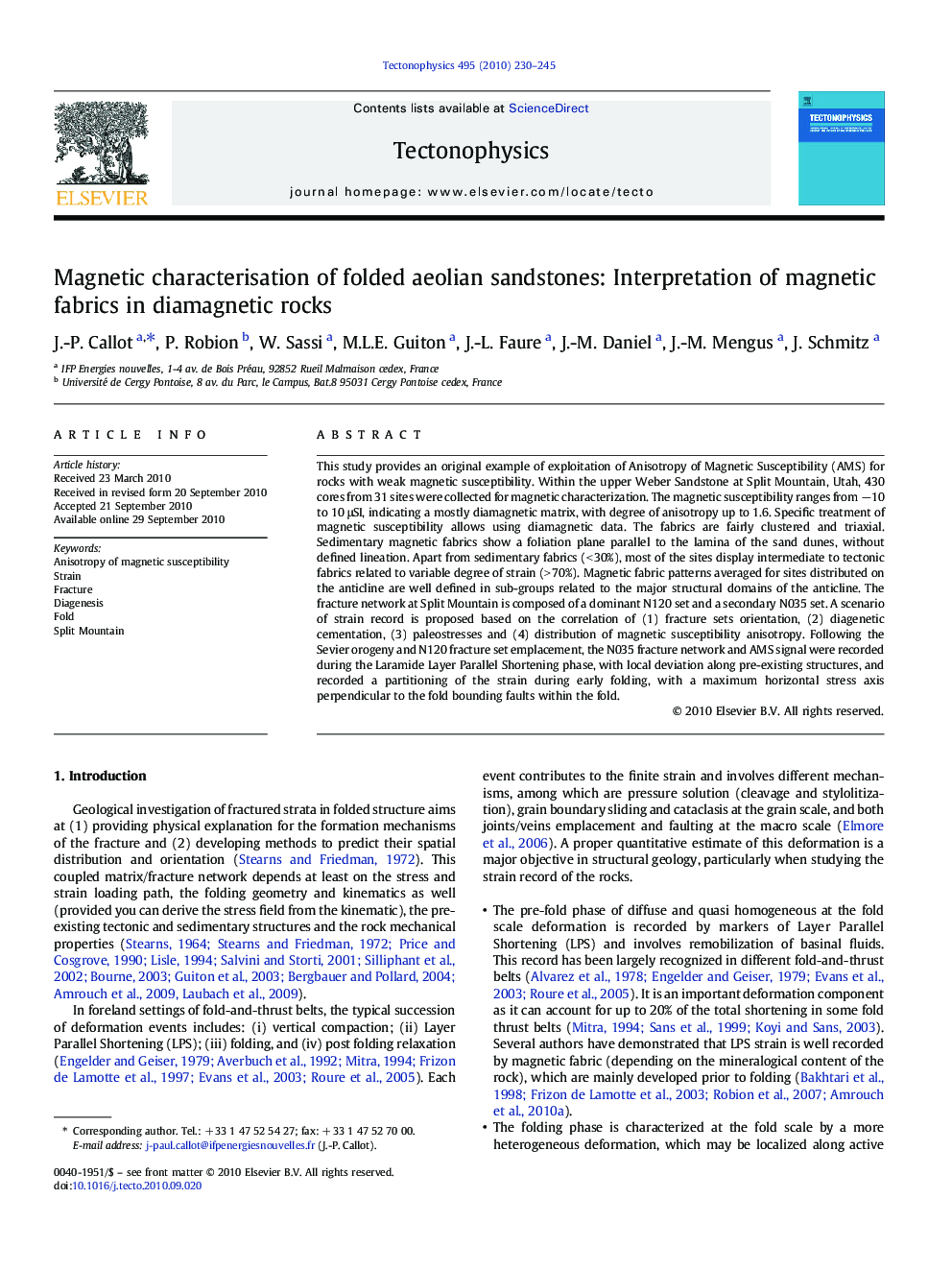| کد مقاله | کد نشریه | سال انتشار | مقاله انگلیسی | نسخه تمام متن |
|---|---|---|---|---|
| 4693295 | 1636856 | 2010 | 16 صفحه PDF | دانلود رایگان |

This study provides an original example of exploitation of Anisotropy of Magnetic Susceptibility (AMS) for rocks with weak magnetic susceptibility. Within the upper Weber Sandstone at Split Mountain, Utah, 430 cores from 31 sites were collected for magnetic characterization. The magnetic susceptibility ranges from −10 to 10 μSI, indicating a mostly diamagnetic matrix, with degree of anisotropy up to 1.6. Specific treatment of magnetic susceptibility allows using diamagnetic data. The fabrics are fairly clustered and triaxial. Sedimentary magnetic fabrics show a foliation plane parallel to the lamina of the sand dunes, without defined lineation. Apart from sedimentary fabrics (< 30%), most of the sites display intermediate to tectonic fabrics related to variable degree of strain (> 70%). Magnetic fabric patterns averaged for sites distributed on the anticline are well defined in sub-groups related to the major structural domains of the anticline. The fracture network at Split Mountain is composed of a dominant N120 set and a secondary N035 set. A scenario of strain record is proposed based on the correlation of (1) fracture sets orientation, (2) diagenetic cementation, (3) paleostresses and (4) distribution of magnetic susceptibility anisotropy. Following the Sevier orogeny and N120 fracture set emplacement, the N035 fracture network and AMS signal were recorded during the Laramide Layer Parallel Shortening phase, with local deviation along pre-existing structures, and recorded a partitioning of the strain during early folding, with a maximum horizontal stress axis perpendicular to the fold bounding faults within the fold.
Research Highlights
► The combined use of fracture and fault slip data, petrographic and diagenetic observations and AMS derived strain direction allows to retrieve the coupled diagenetic and deformation scenario recorded in a forced fold.
► Matrix strain record is controlled by the diagenetic history of cement deposition and dissolution.
► AMS data can be used in diamagnetic rocks to estimate paleostrain direction during successive event of foreland basin shortening and forced folding.
Journal: Tectonophysics - Volume 495, Issues 3–4, 3 December 2010, Pages 230–245